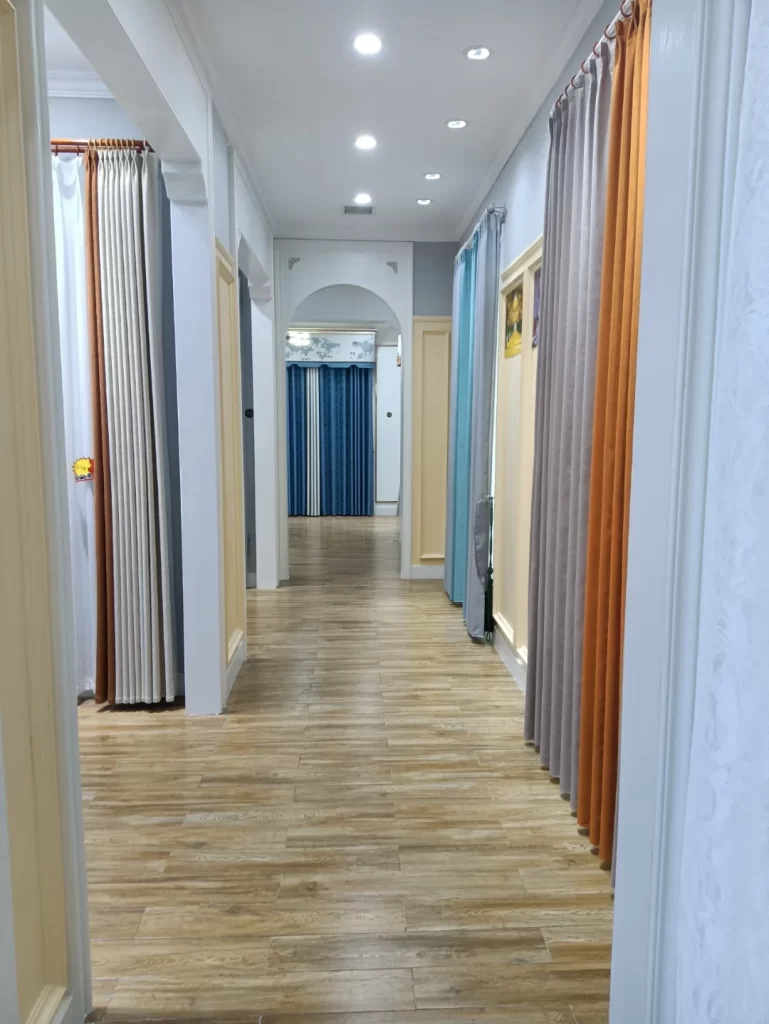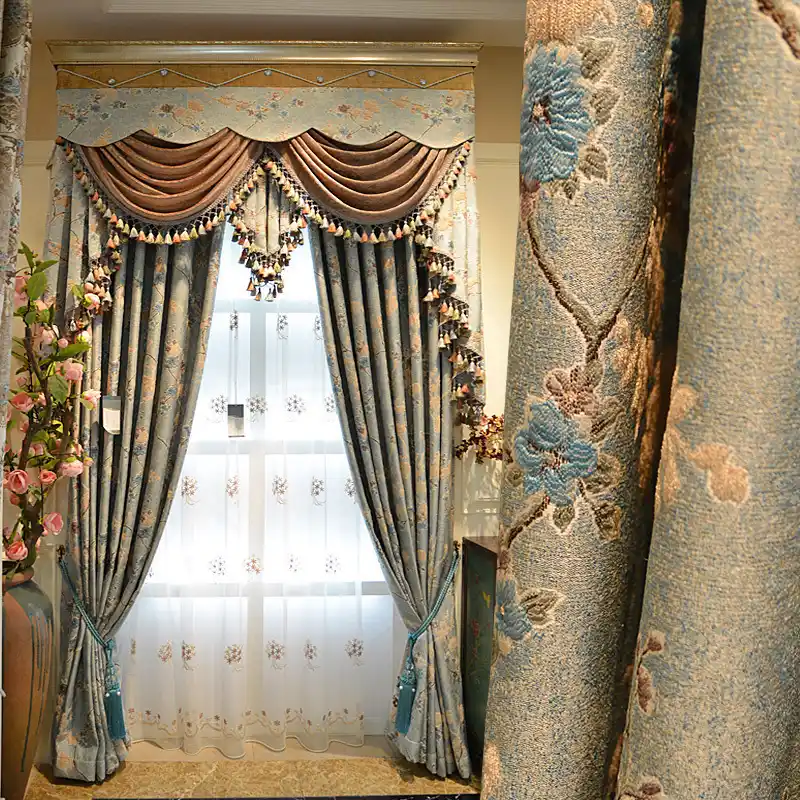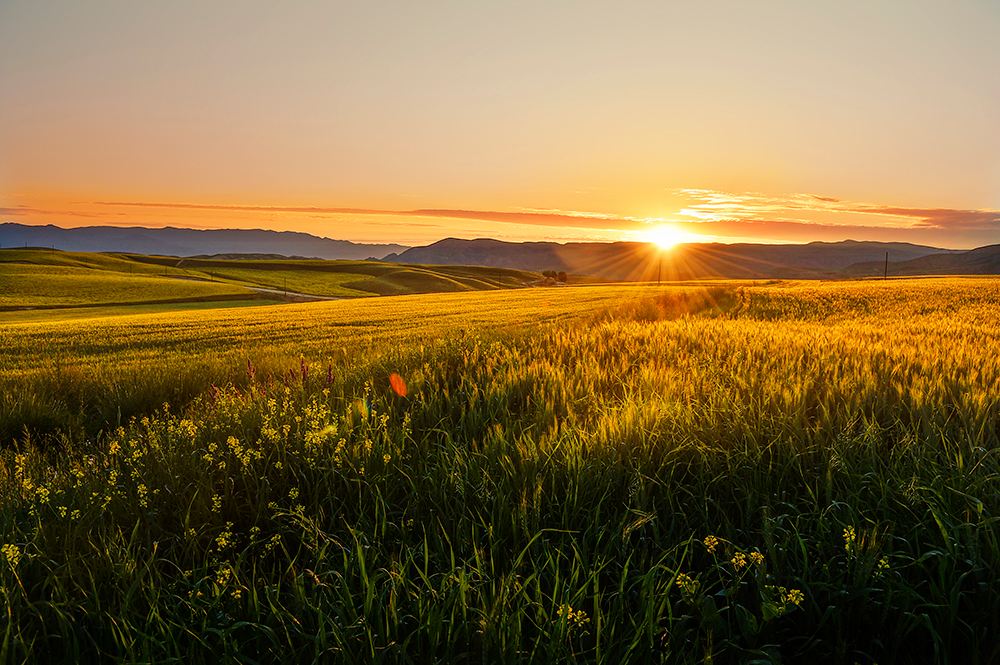


Curtains are more than window coverings—they define the mood of a space, control light, provide privacy, and enhance interior aesthetics. High-quality curtains result from the combination of skilled craftsmanship, quality materials, and precise production processes.
1. The Purpose of Curtains
Curtains serve a variety of roles in modern interiors:
- 🌞 Light Control: Adjust natural light for comfort and mood.
- 🔒 Privacy: Shield interiors from external view.
- 🌡️ Insulation: Help regulate indoor temperature and reduce energy costs.
- 🎨 Design Element: Enhance the aesthetic appeal of any room.
2. Fabric Selection
Fabric choice impacts the curtain’s texture, drape, and performance. Each type of fabric is suitable for different uses:
| Fabric Type | Key Features | Recommended Use |
|---|---|---|
| 🟤 Linen | Breathable, natural texture, soft drape | Living rooms, dining areas |
| 🟣 Velvet | Heavy, luxurious, blocks light | Bedrooms, hotels, theaters |
| 🟢 Polyester | Durable, low-maintenance, cost-effective | Offices, apartments, classrooms |
| 🟡 Sheer | Light, translucent, softens sunlight | Balconies, sunrooms, offices |
3. Popular Curtain Styles
Curtain style affects both appearance and function. Common designs include:
| Style | Description | Best For |
|---|---|---|
| Pleated | Classic folds for formal look | Hotels, dining rooms |
| Eyelet | Modern, slides smoothly on rods | Living rooms, bedrooms |
| Wave Fold | Contemporary, uniform drape | Offices, minimalist interiors |
| Layered | Combines sheer + blackout fabrics | Luxury homes, multifunctional rooms |
4. Manufacturing Process
Curtain production combines technology and craftsmanship:
- Fabric Cutting: Precision machines ensure exact dimensions.
- Sewing & Hemming: Skilled workers complete pleats, hems, and finishes.
- Lining & Reinforcement: Improves insulation, light-blocking, and durability.
- Accessory Installation: Hooks, rods, tiebacks, or decorative trims.
- Quality Inspection: Ensures correct size, consistent stitching, and color accuracy.
Production Workflow Example:
| ✅ Task | 🔹 Importance | ⏱ Estimated Time |
|---|---|---|
| Fabric inspection | High | 30 min per batch |
| Cutting & measurement | High | 20 min per panel |
| Sewing & pleating | Medium | 1–2 hrs per curtain |
| Final QC & finishing | High | 15 min per curtain |
5. Sustainable Practices in Curtain Production
Modern curtain manufacturing increasingly emphasizes sustainability:
| 🌍 Practice | ✅ Benefit | 📌 Notes |
|---|---|---|
| Eco-friendly dyes | Reduce chemical waste | Safe for indoor use |
| Recyclable packaging | Minimize environmental footprint | Convenient for shipping |
| Energy-efficient machinery | Lower energy costs | Reduces carbon footprint |
6. Conclusion
Curtains are the perfect combination of design, functionality, and craftsmanship. From careful fabric selection to precise manufacturing and finishing, every step contributes to high-quality curtains that enhance comfort, style, and sustainability. Modern curtain production allows interiors to be both beautiful and practical, making curtains an indispensable element in homes and commercial spaces alike.
Article link:https://www.vlefooena.com/modern-curtain-manufacturing-crafting-beauty-and-function

No reply content